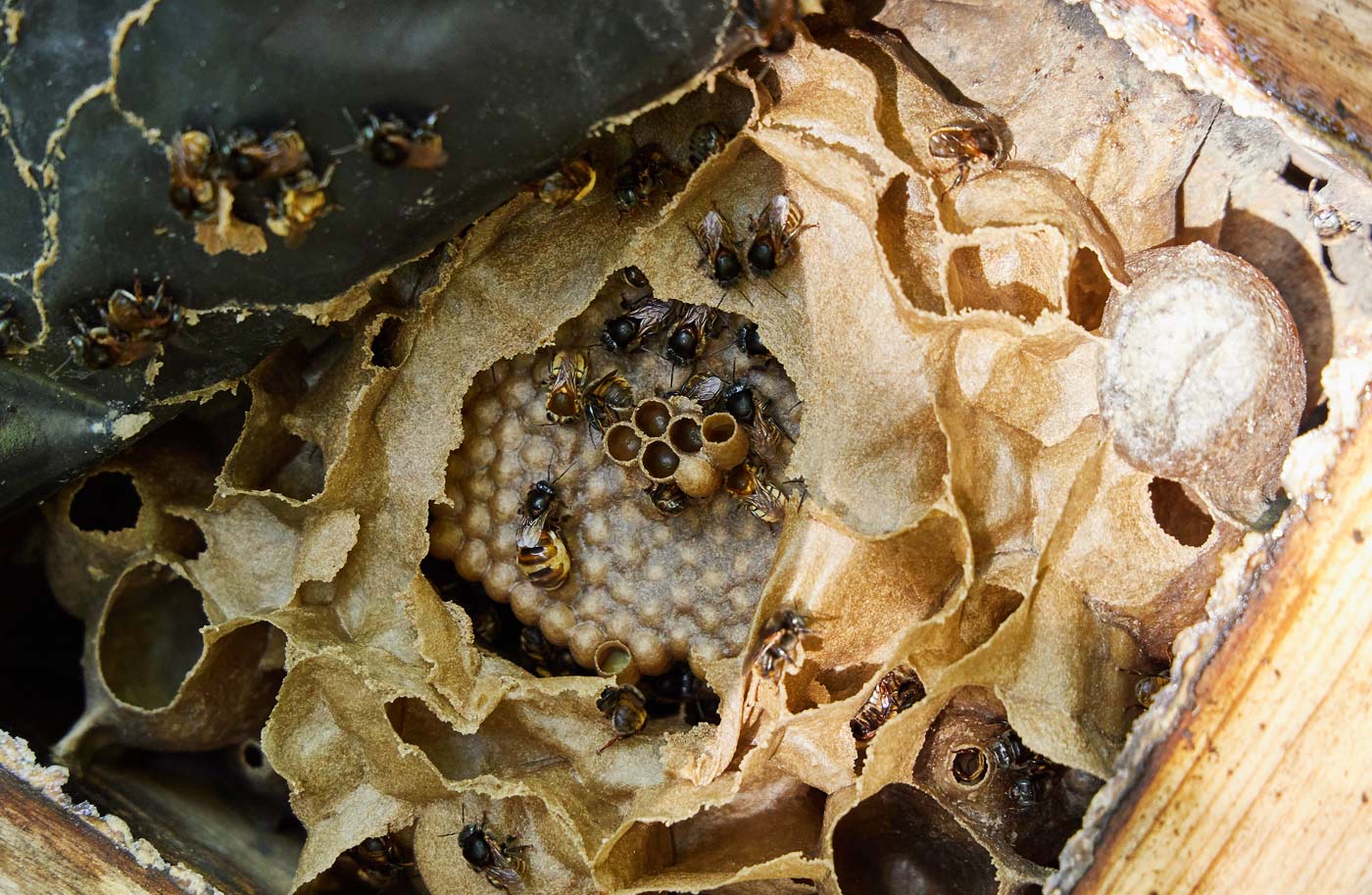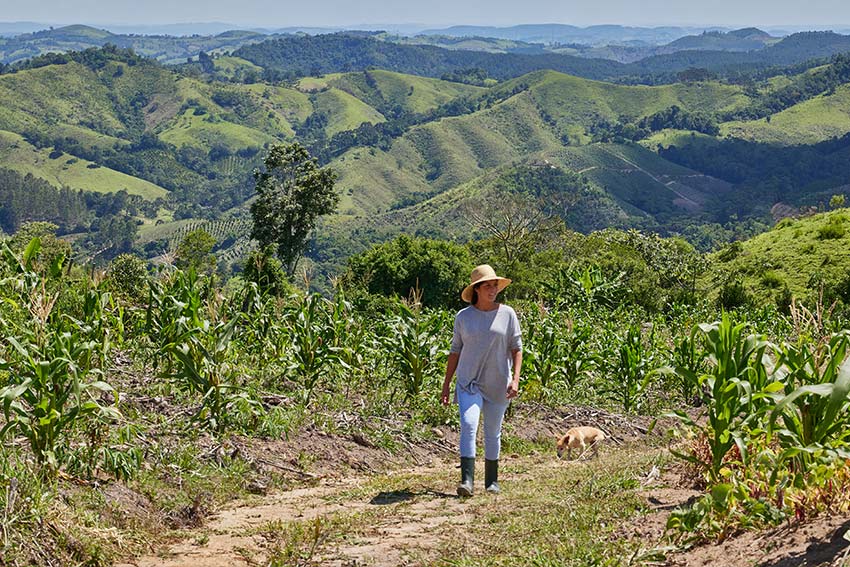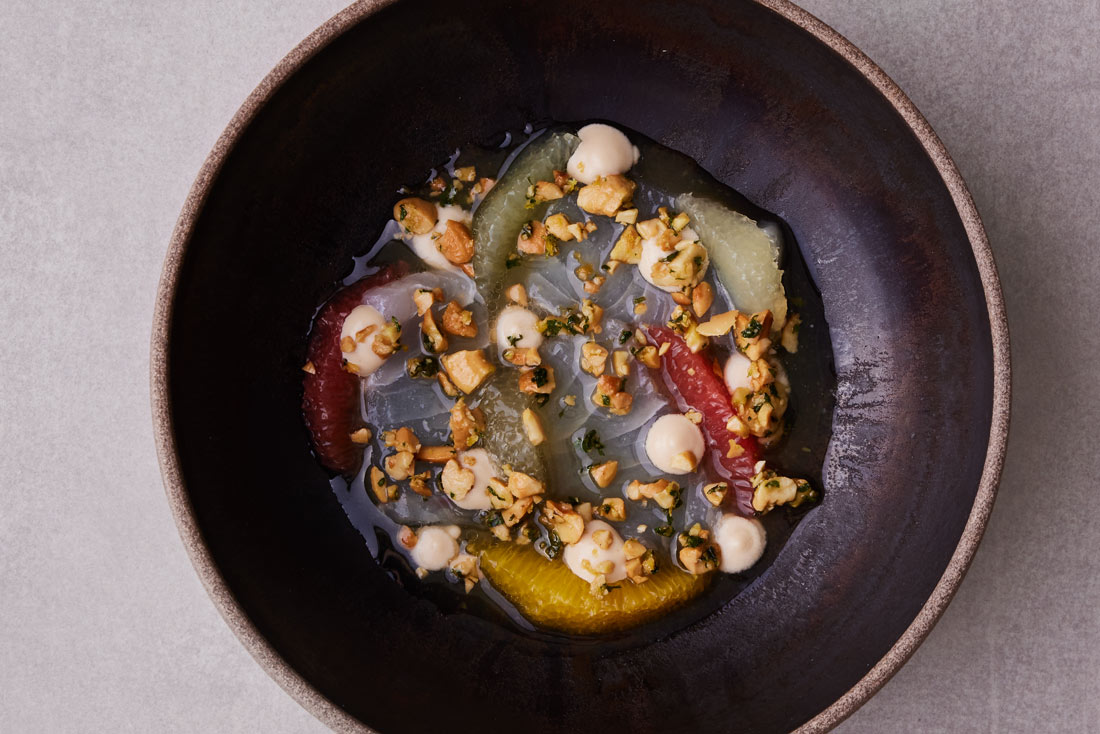
Of the over 500 stingless bees identified globally, nearly 300 of them are in Brazil. Each has a unique flavour you won’t find anywhere else, influenced by the flowers they eat and the unique preferences of each species. They are our caviar here in South America. As a chef, to have an abundance of them right in our own backyard is amazing.
I first learned about them back in 2008 when I met someone working with them from the south of my city, Curitiba. She asked me to try the honey (what I tasted blew me away. I was expecting something remotely sweet; instead, I got something sour and acidic, as if you were seasoning salad. I didn’t think it was possible for honey to have that kind of flavour; it was incredible) and told me that she needed my help to promote stingless bee honey more widely. I jumped at the chance.

I began to research and explore the history of these bees. I discovered that Meliponas had all but become extinct since the Portuguese arrived in Brazil and introduced European species – which, comparatively, produce a lot more wax and could keep up with the demands of the Catholic church. I also learned that the Brazilian government were suspicious of Melipona honey due to the fact that it is naturally fermented. There needed to be changes in both regulation and perception.
I started in the place I knew best, the kitchen. For a chef, Melipona honey provides an incredible playground of different flavours and textures. Unlike some other countries, where it is a composite of different varieties of bees, in Brazil each type of honey is separated and tightly controlled because the producers don’t have a lot of hives. Whatever the variety – Mirim Saiqui, Tubuna, Emerina, Jatai, Mandacaia or another – it comes already-fermented in little, 10-12 ml capsules. Joyfully, each capsule is slightly different.
My first attempt at using stingless bee honey was with kombucha. I used it as a base for fermentation, along with some ginger, and set it aside for seven days. The process turned out to be faster and easier because the honey was already fermented by the time it was harvested. The result is a more complex flavour once the kombucha base is introduced to juice or tea.

Because my hometown Curitiba is only 30 minutes from the sea, using honey on seafood was the next choice. For that, I use Mirim Saiqui and Emerina honey. Mirim Saiqui’s prominent fermented sour taste with very little sugar pairs well with fish. It’s a sophisticated flavour – lemon zest with back notes of truffle – that works well when drizzled over thinly sliced raw fish. On the other hand, Emerina starts out with a lemon-like profile but finishes with a bit of sweetness in the back. It makes your mouth sensitive, helping the lemon, resin, and truffle-like flavours to travel around your mouth. That’s why it’s great as a vinaigrette drizzled on scallops.
Over time, I started to use the honey on desserts and pastries. I typically use Tubuna honey because it’s predominantly sweet and creamy; it even smells a bit like coconut. I love adding its pollen to yoghurt ice cream because it has a lot of umami with a delicate sour touch. We microplane the fresh pollen on top and serve the ice cream with tucupi (fermented cassava) and strawberries. We also make another pastry dessert with blue cheese and Tubuna honey. The honey’s acidity balances the umami from the blue cheese, so we love to use this combination with pastry.
The Mandure and Mandacaia varieties I use for meat rubs and marinades, primarily lamb and other fatty meats. They’re delicately sweet, so they’re a very good match with the spice mixture we use. The honey is also creamy, making it easy to incorporate the spices. We mix honey and pollen with a lot of cumin, pink pepper, and cinnamon, then coat the meat with the mixture and let it sit for an hour before grilling it.

After using the honey for a while, I wanted to let other chefs know how wonderful and versatile this local ingredient is. So I started putting on dinners and discussing the honey with friends in the industry. They loved it and began putting it on their own menus, but there was a problem: these bees are super small and each hive only produces around one litre of honey a year. There would not be enough honey to go round.
The answer was to put beehives around the city, and to encourage locals to connect with the ingredient through education. We put more than a thousand hives in town, in public parks, in public schools and even in people’s houses. I’m now at the point where I get to work side-by-side with local producers and exclusively use Melipona honey from them.
I truly believe that in about five to six years, we’ll have more producers of native Brazilian honey and be able to export the product commercially. But it needs to be done sustainably. For now, the best thing we can do is expand people’s awareness about these stingless bees, one urban garden at a time.
————-
Manu Buffara’s cookbook Manu: Recipes and Stories from My Brazil is published by Phaidon and available on Amazon
All Photographs by Jimena Agois



